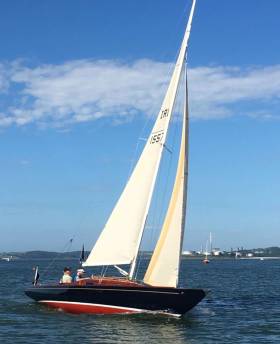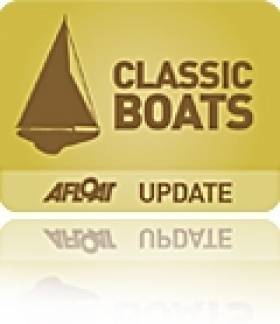Displaying items by tag: Soling
Ireland’s Boatbuilding Magician to Cast a New Spell?
Bill Trafford, Ireland’s boatbuilding sorcerer who beavers away in a shed near Skenakilla Crossroads in North County Cork, is already hatching new magic as onlookers continue to be entranced by his Super Etchells 22 Guapa currently making her debut on Cork Harbour writes W M Nixon.
This extraordinary project has already attracted several potential customers with their own ideas on re-configuring standard glassfibre boats. But Bill himself reckons that after an Etchells 22, a useful area for exploration might be found with the former Olympic class, the 26.75ft LOA Soling, which already comes with quite a pretty sheerline, and would only need a classic counter (and of course a teak laid deck and an elegant little cabin-top) to transform her into a very special 30-footer.
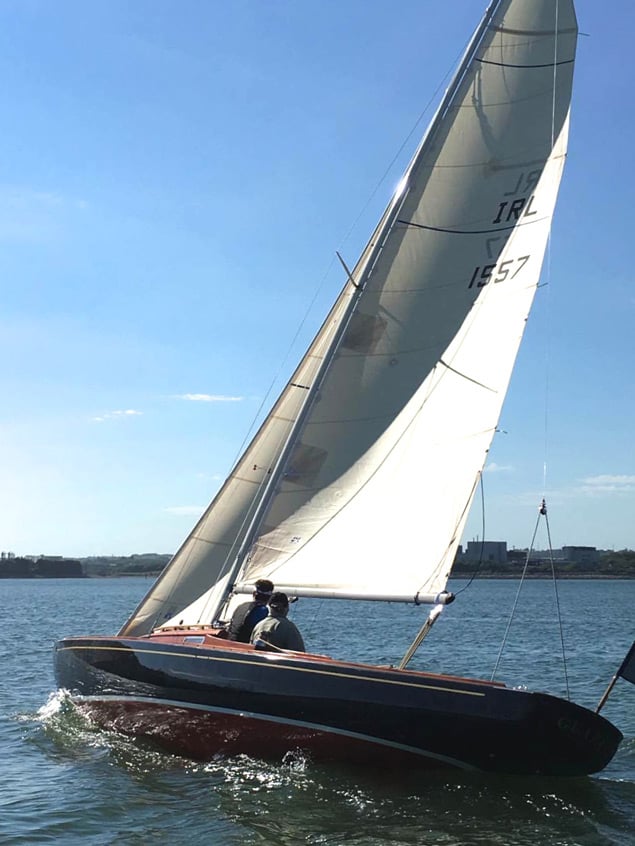 With a new counter stern inspired by the transom of the Friendship sloop of Maine, this is an Etchells 22 with a difference
With a new counter stern inspired by the transom of the Friendship sloop of Maine, this is an Etchells 22 with a difference
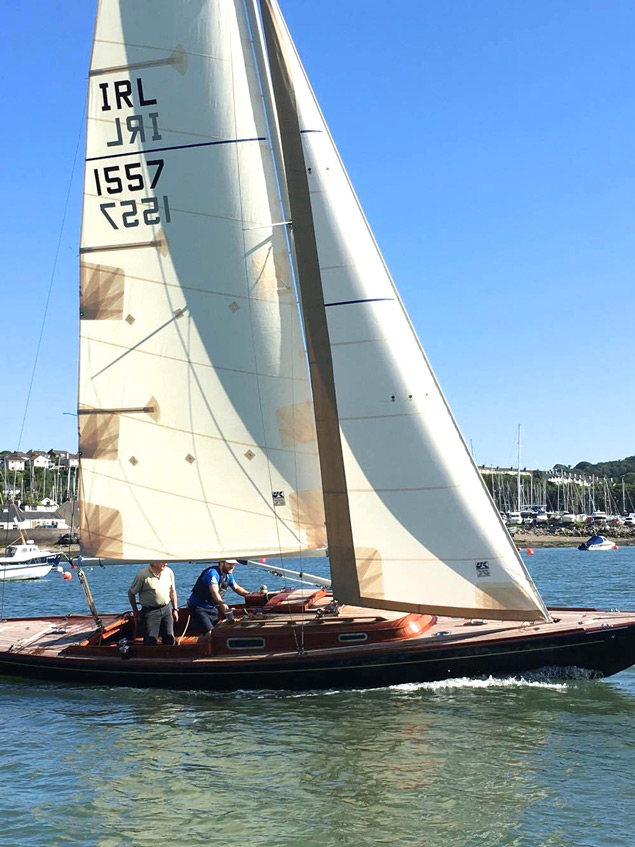 Amidships, the Etchells 22 seems purest Scandinavian in concept
Amidships, the Etchells 22 seems purest Scandinavian in concept
There’s no doubt that the Soling has a long-lasting hull, and one in reasonable order would respond very well to the Skenakilla treatment. But I think I’d pass on what used to be a Soling, which we spotted a couple of years ago when cruising the Hebrides.
This boat is to be found – or at least used to be found – abandoned at Port Ellen on Islay. The conversion to her presumably dates from the days of short-handed Round Britain & Ireland Races and other such ventures. Someone had taken a standard Soling, and stuck a sort of cabin on the forward end of the cockpit, and then for stowage space had put a box of sorts on the afterdeck.
The result, it could be argued, was a small centre-cockpit offshore racer. Somehow, she ended up on Islay. The concept is not quite what Bill Trafford has in mind. But it certainly proves that the Soling has considerable scope for innovation and re-configuration.
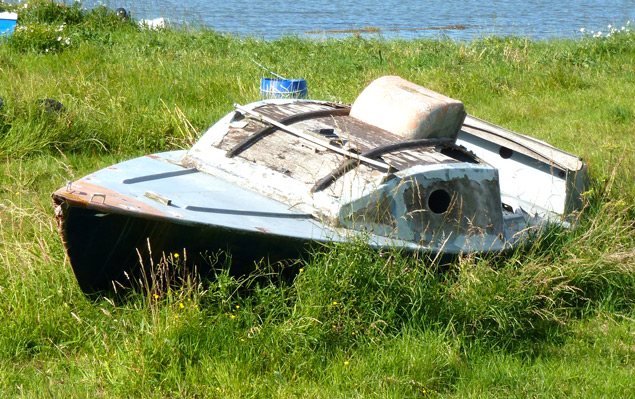 Once upon a time, this was an Olympic Soling…Photo: W M Nixon
Once upon a time, this was an Olympic Soling…Photo: W M Nixon
 ....and this is how she looked originally
....and this is how she looked originally
#classicboat – Cowes Classics Week has an eligibility policy with a rolling 50 year design date. This means that three new classes become eligible in 2015 and are preparing to celebrate their anniversary at Cowes Classics Week 2015 writes Dave Elliott.
Tempest: designed by Ian Proctor for the 1965 trials for the new Olympic Keelboat used alongside the Star in 1972 in which the British won the Silver Medal and as the two-handed keelboat in 1976. The Tempest is unusual for a keelboat in having a trapeze and can reach remarkable speeds.
Soling: designed by Jan Linge of Norway in 1965 based on ideas that emerged while tank testing a 5.5mR for the 1960 Olympics, ideas which were outside the 5.5mR rules. The Soling was selected as the men's triple-handed boat for the 1972 Olympics in selection trails at which it was the only survivor in heavy conditions at Kiel and remained an Olympic class until 2000.
Contessa 26: designed by Jeremy Rogers and heavily influenced by David Sadler and the Folkboat to produce a 25.6ft fibreglass boat that proved to be a very successful racer and capable of long-distance, blue-water cruising.
In addition, other new classes that will join us in 2015:
Star: designed in 1910 by Francis Sweisguth—draftsman for William Gardner's Naval Architect office and has been an Olympic class since1932 until 2012 - it will not compete in 2016. They will wear their artist-designed sails - Fine Arts Sails have produced a set of sails with designs by renowned artists and are coordinating events for the class in support of the Andrew Simpson Sailing Foundation.
Royal Burnham One Design: designed by Norman Dallimore in 1932, the RBOD is similar in hull profile to the Alfred Westmacott designed XOD. Continuing our ambition to get together one-design classes from around the country as they are not well set up for travelling, CSCCW will be assisting with bringing some of the boats to Cowes.
Cruisers (non-Spinnaker): a new class that will appeal to those not so well set up for racing.
And, we are assured by the class associations of increased turnouts from XOD (the largest class that should reach 60 boats), Sunbeam and Daring (both of which have more boats in action than ever before as boats are restored, recovered or built/rebuilt) and 6mR (one of the most iconic classes ever).
British Sailors Want Redress Over 1980 Olympic Boycott
#OLYMPICS - "Lingering bitterness" among British sailing veterans over the boycott of the 1980 Moscow Olympics has pushed them to seek recognition for the effort they put into their campaigns, the Daily Telegraph reports.
The Royal Yachting Association (RYA) was one of four sporting bodies that joined the British government's boycott of the Olympics that year.
But according to the sailors who had earned their spots at the games, the RYA's decision was made without consultation with them or the body's membership.
“They took away our dream, the fruits of months and years of hard work and dedication which is something I will regret until my dying day,” said Soling sailor Gavin Simonds, who is leading the charge for the RYA to make amends before London 2012 and assure that no sailor will be so deprived in future.
Simonds' brother Colin was the one of the leading Soling sailors in the world in 1980, and was reportedly devastated when the RYA backed that year's boycott.
The 1980 games saw Ireland win its only Olympic medals in sailing when David Wilkins and James Wilkinson took silver in the Flying Dutchman class. The president of Irish sailing's governing body has an honourary seat on the RYA council.
The Daily Telegraph has much more on the story HERE.



























